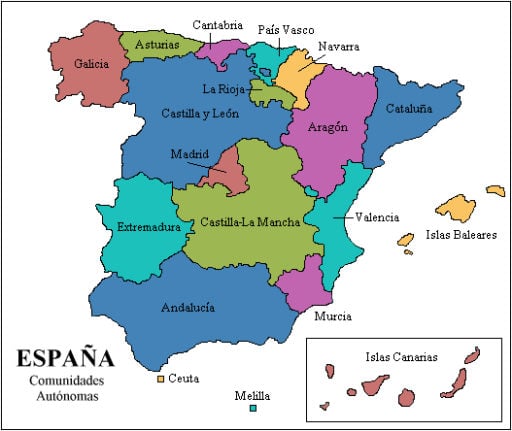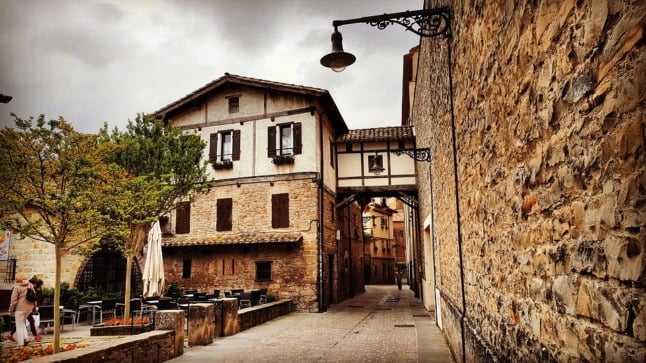Let’s face it – quality of life is subjective. For some, it’s how often the sun shines and whether they can buy a coffee for under €1, for others it’s how well public services work or how long they have to wait to see a doctor.
International evaluators of quality of life such as the OECD’s Better Life Index, the World Happiness Report and the Social Progress Index usually rank Scandinavian countries, Switzerland, Australia and other wealthy nations among the best.
Spain tends to rank between 20th and 30th position in such studies, although in the HSBC Expat Explorer Survey Spain is consistently among the five best countries to move to for foreigners, scoring especially high for “quality of life”, “physical & mental wellbeing”, “cultural, open and welcoming communities”, “political stability” and “ease of settling in”.
But what do Spaniards think? And which regions are the best and worst to live in in their eyes?
Spain’s National Statistics Institute (INE) uses 60 indicators to assess how Spain’s 17 autonomous communities stack up against each other.
That’s certainly a lot, but before we find out which places offer the best “calidad de vida” (quality of life) in Spain, let’s quickly have a look at the rates that have been assessed in order to get a clearer picture of what is being judged.
- Disposable income available
- Population at risk of poverty
- Inequality
- Household income satisfaction
- Difficulty making ends meet
- Material deficiency
- Certain deficiencies
- Lack of space at home
- High spending on housing
- Satisfaction with housing
- Impossibility of dealing with unforeseen expenses
- Payment delays
- Employment rate
- Unemployment rate
- Long-term unemployment
- Involuntary part-time employment
- Low salaries
- Long work hours (40 to 48 hours)
- Temporary work rate
- Job satisfaction
- Life expectancy at birth
- Good or very good self-perceived state of health
- Chronic morbidity
- People with severe or limited limitations in daily activity
- Unmet health care needs
- Body mass index
- Daily smokers
- Regular physical exercise
- Sedentary lifestyle
- Level of work training among total population (youth and adults)
- Early school dropout rate
- Continuous training rate
- Satisfaction with available time
- Cinema attendance rate
- Cultural interest attendance rate(monuments, museums)
- Theater, concerts attendance rate
- Live sports attendance rate
- Low frequency of meetings with friends, family or colleagues
- Average satisfaction with personal relationships
- Availability of family, friends or neighbours to whom to ask for help
- Availability of someone to talk to about personal matters
- Trust in others
- Homicide rate 2020
- Crime rate 2020
- Crime or vandalism 2020
- Safety walking alone at night
- Average trust in the political system
- Average trust in the judicial system
- Average trust in the police
- Participation in political activities
- Pollution and other environmental problems
- Noise pollution
- Air quality
- Satisfaction with green areas and recreational areas
- Satisfaction with the environment
- Overall satisfaction with life
- Rate of happiness over the last four weeks
- Satisfaction with meaning and purpose of life
So obviously INE’s data covers a huge range of factors which constitute to a greater or lesser extent what makes a fulfilling and happy life (we’ll summarise it a more digestable manner below).

But first, which Spanish regions scored highest and lowest overall in these quality of life categories? Here’s the full ranking from best to worst:
- Navarre
- Aragón
- La Rioja
- Basque Country
- Balearic Islands
- Cantabria
- Madrid
- Castilla y León
- Asturias
- Catalonia
- Galicia
- Valencia region
- Extremadura
- Castilla-La Mancha
- Murcia
- Canarias
- Andalusia

It seems that overall northern regions offer a better quality of life than southern autonomous communities, according to their inhabitants.
In terms of material belongings (in other words, owning anything from a car to your own home and having the income or savings to afford them), the Basque Country comes first in Spain followed by Aragón, Navarre and La Rioja. On the other side of the spectrum are Murcia, Andalusia and the Canary Islands.
As for work matters (everything from wages to employment and training options) Aragón, the Basque Country and the Balearics are the top three regions whereas the Canary Islands, Extremadura and Andalusia are last.
READ ALSO: Where are workers’ salaries highest and lowest in Spain?
Regarding health matters, and we’re starting to see a trend here, Navarre, the Basque Country and Aragón are top and Murcia, the Canary Islands and Andalusia are last.
Vis-a-vis education, the Basque Country, Navarre and Madrid lead the rankings and Extremadura, Castilla-La Mancha and Andalusia trail way behind.
In terms of leisure and free time, the offering and the time availability is best once again in Navarre, the Balearics and La Rioja and worst in, you guessed it, the Canaries, Murcia and Andalusia.
In terms of crime, Cantabria, Asturias and Galicia are the safest and Murcia, Catalonia and Madrid have the most crime problems.
For environmental issues, the inhabitants of Navarre, Castilla y León and Cantabria are satisfied with the state of their nature and green spaces but people in Andalusia, the Canary Islands and Murcia not so much.
And as for the overall life satisfaction levels, the people of the Balearic Islands, Aragón and Extremadura are the most content whereas in Castilla-La Mancha, Castilla y León and Galicia, suggesting once again that happiness and perception of quality of life can be subjective.
Afterall in a country like Spain – where despite the problems that plague official matters it’s perfectly possible to be happy – life is really what you make of it.
READ ALSO:




 Please whitelist us to continue reading.
Please whitelist us to continue reading.
Member comments